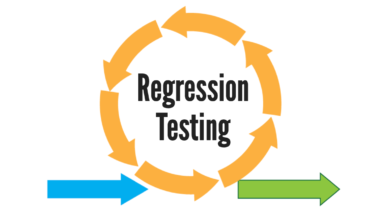Understanding the Importance of Cloud Data Storage for AWS Practitioners

In today’s digital landscape, data is the lifeblood of organizations across various sectors. As businesses increasingly shift towards cloud computing, the importance of understanding cloud data storage has never been greater, particularly for AWS practitioners. This article delves into the significance of cloud data storage, highlighting its benefits, challenges, and best practices, while also integrating essential keywords related to AWS training and examination.
The Evolution of Data Storage
Traditional vs. Cloud Storage
Historically, data storage was heavily reliant on physical hardware, often leading to inefficiencies and limited scalability. Traditional data centers required significant capital investment and ongoing maintenance costs. With the advent of cloud computing, businesses began to recognize the potential for more flexible, scalable, and cost-effective data storage solutions.
Cloud storage allows organizations to store vast amounts of data offsite, managed by third-party providers like Amazon Web Services (AWS). This shift not only reduces infrastructure costs but also enhances data accessibility and collaboration among teams.
The Role of AWS in Cloud Storage
AWS has emerged as a leader in cloud services, providing a comprehensive suite of tools for data storage, processing, and management. With various storage options, including Amazon S3, Amazon EBS, and Amazon Glacier, AWS empowers businesses to choose the right solution based on their unique needs.
Why Cloud Data Storage is Crucial for AWS Practitioners
1. Scalability and Flexibility
One of the primary advantages of cloud data storage is scalability. AWS allows users to scale their storage needs up or down based on demand, ensuring that organizations only pay for what they use. This flexibility is crucial for businesses experiencing rapid growth or seasonal fluctuations in data requirements.
AWS practitioners must understand how to leverage this scalability to optimize costs and improve performance. For instance, by using Amazon S3, businesses can store and retrieve any amount of data at any time, making it an ideal choice for applications that require large-scale storage solutions.
2. Cost-Effectiveness
Cloud data storage significantly reduces the financial burden on organizations. Traditional data centers necessitate large upfront investments in hardware and ongoing expenses for maintenance and upgrades. In contrast, AWS offers a pay-as-you-go pricing model, allowing companies to only pay for the resources they consume.
AWS practitioners should familiarize themselves with various pricing models and storage options to help businesses make informed decisions that align with their budget and operational goals. This understanding can be pivotal for those preparing for the AWS Cloud Practitioner Essentials course, as it emphasizes cost management in cloud environments.
3. Enhanced Data Security
Security is a top concern for businesses dealing with sensitive data. AWS provides robust security measures to protect stored data, including encryption, identity and access management (IAM), and regular security audits. Understanding these security features is essential for AWS practitioners, as they will need to implement and manage them effectively.
Practitioners must also stay updated on best practices for securing cloud data, such as using Amazon S3’s bucket policies and IAM roles to control access. This knowledge not only enhances their skill set but also boosts their confidence in managing cloud data securely.
4. Improved Collaboration and Accessibility
In a globalized workforce, collaboration is critical for success. Cloud data storage facilitates seamless collaboration by allowing multiple users to access and work on the same data simultaneously, regardless of their location. This accessibility is particularly beneficial for remote teams, enabling them to share insights and make data-driven decisions quickly.
AWS practitioners should leverage tools like Amazon WorkDocs and Amazon Chime to enhance collaboration within their organizations. Understanding how to implement these tools effectively can be a game-changer for teams aiming to maximize productivity.
5. Data Backup and Disaster Recovery
Data loss can be catastrophic for businesses, leading to significant financial losses and reputational damage. Cloud storage provides robust backup and disaster recovery options, ensuring that data remains safe and accessible even in the face of unexpected events.
AWS offers various solutions for backup and recovery, including Amazon S3 for object storage and Amazon RDS for relational databases. AWS practitioners should familiarize themselves with these tools and develop strategies for implementing effective backup and disaster recovery plans.
Overcoming Challenges in Cloud Data Storage
1. Data Migration
Migrating data to the cloud can be a daunting task for organizations, especially when dealing with large volumes of data. AWS practitioners must understand the migration process and best practices to ensure a smooth transition.
AWS offers several tools to assist with data migration, such as AWS Migration Hub and AWS DataSync. Familiarity with these tools is essential for practitioners looking to streamline the migration process and minimize downtime.
2. Compliance and Regulatory Issues
As organizations move their data to the cloud, they must navigate various compliance and regulatory requirements. AWS provides compliance certifications and frameworks to help organizations meet these standards, but AWS practitioners must be proactive in understanding the specific regulations applicable to their industry.
Knowledge of compliance frameworks, such as GDPR and HIPAA, is essential for practitioners aiming to guide their organizations in maintaining regulatory compliance while leveraging cloud data storage.
3. Vendor Lock-In
Another challenge associated with cloud data storage is the potential for vendor lock-in, where organizations become dependent on a single cloud provider. While AWS offers numerous benefits, organizations must consider the implications of becoming too reliant on one provider.
AWS practitioners should explore multi-cloud strategies and understand how to design architectures that minimize vendor lock-in risks. This knowledge will be invaluable for those taking the AWS Cloud Practitioner practice exam, as it tests their ability to think critically about cloud strategies.
Best Practices for AWS Practitioners
1. Regularly Review Storage Solutions
AWS offers a variety of storage solutions, each designed for specific use cases. AWS practitioners should regularly review their organization’s storage needs and evaluate whether their current solutions are meeting those requirements.
For instance, transitioning from Amazon EBS to Amazon S3 for certain workloads can lead to cost savings and improved performance. Staying informed about the latest AWS offerings will help practitioners make educated decisions that benefit their organizations.
2. Implement Data Governance Policies
Establishing data governance policies is essential for managing data effectively in the cloud. AWS practitioners should work with stakeholders to develop policies that outline data ownership, access controls, and data retention guidelines.
Effective data governance not only enhances security but also ensures that data is managed in a compliant and efficient manner. Practitioners should prioritize training and awareness to ensure all team members understand their roles in maintaining data governance.
3. Monitor and Optimize Storage Usage
Continuous monitoring of storage usage is crucial for identifying inefficiencies and optimizing costs. AWS provides various tools, such as AWS CloudWatch and AWS Cost Explorer, to help practitioners monitor their storage resources.
By analyzing usage patterns and costs, AWS practitioners can identify opportunities for optimization, such as transitioning to lower-cost storage options for infrequently accessed data. This proactive approach to monitoring can lead to significant cost savings over time.
4. Stay Informed About Emerging Trends
The cloud landscape is constantly evolving, with new technologies and best practices emerging regularly. AWS practitioners must stay informed about these trends to remain competitive and effective in their roles.
Engaging in continuous learning through AWS training programs, webinars, and community forums can help practitioners stay ahead of the curve. This commitment to learning will not only enhance their skills but also prepare them for future challenges in cloud data storage.
Conclusion
Understanding the importance of cloud data storage is crucial for AWS practitioners seeking to excel in their roles. By leveraging the scalability, cost-effectiveness, security, and collaboration features of AWS storage solutions, practitioners can help their organizations navigate the complexities of data management in the cloud.
Overcoming challenges such as data migration, compliance, and vendor lock-in requires a proactive approach and a deep understanding of AWS tools and best practices. By implementing effective strategies and staying informed about emerging trends, AWS practitioners can position themselves as valuable assets to their organizations in the ever-evolving cloud landscape.
Investing in your knowledge and skills as an AWS practitioner will not only enhance your career prospects but also contribute to the success of your organization in the competitive digital world.





